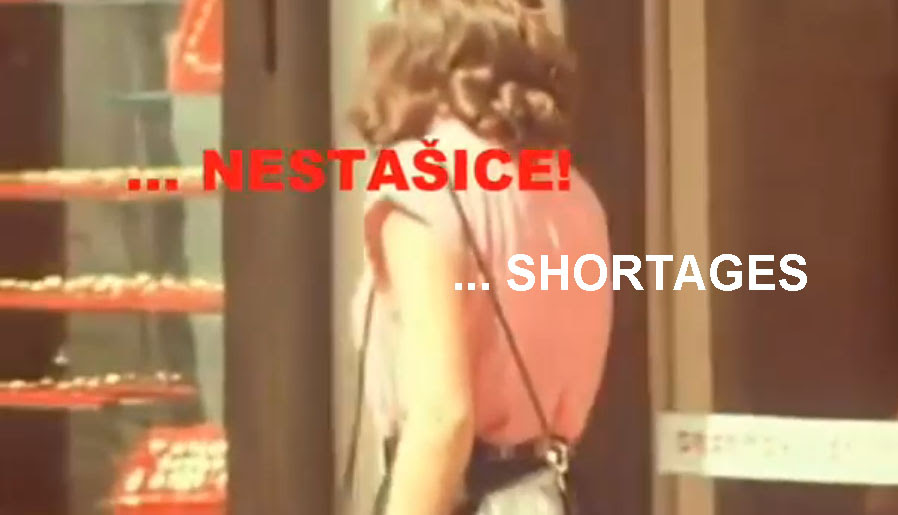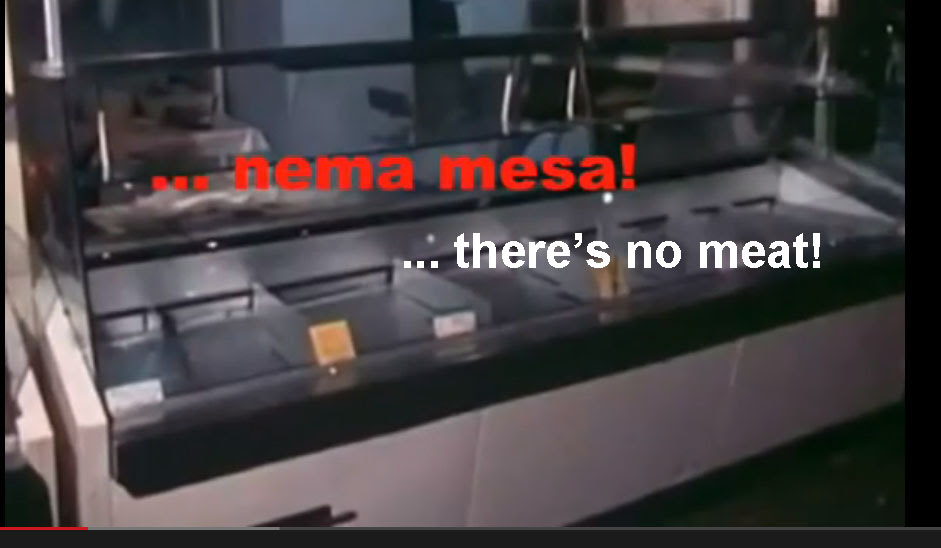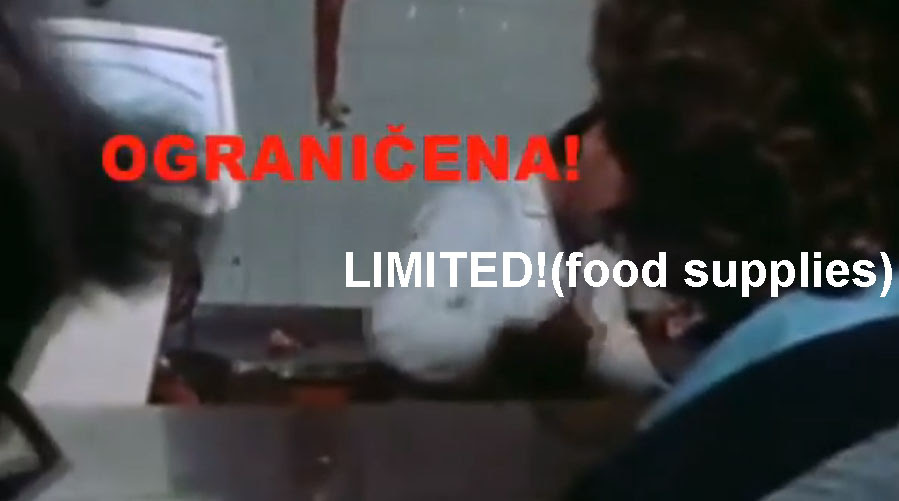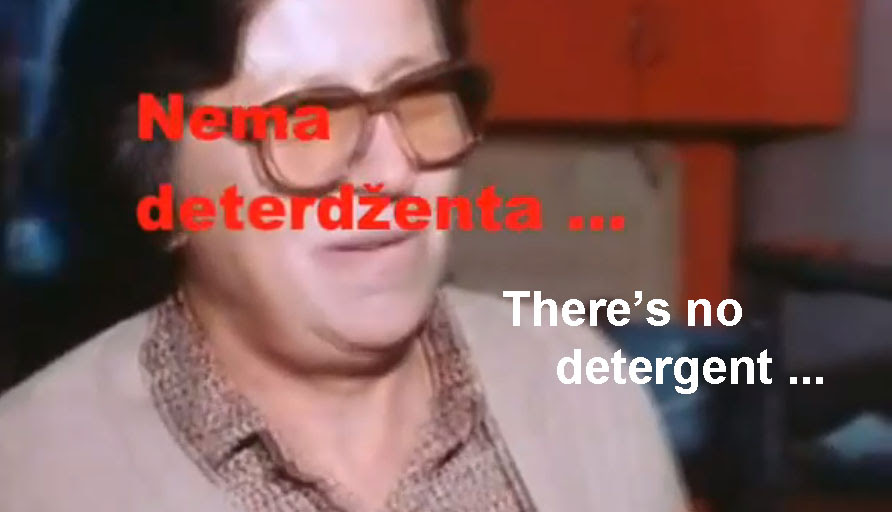A
form of nostalgia for communist-led Yugoslavia (whether celebrating
Tito as a great leader or starting a new organisation or political party
that glorifies the so-called Tito’s antifascism) still, after 24 years
of independence, interferes with the lives of Croats almost every day.
One comes across a plethora of incompatible or opposite reactions in
media and on the streets: horror, anger, irritation, longing,
romanticising about the past…Those who react to this nostalgia with horror, anger and irritation are,
without doubt, those who remember well the awful reality Tito’s
communist Yugoslavia ended up with and want to move further with
democracy and as far as possible away from the communist totalitarian
regime that once was. Those who long for and romanticise about Tito’s
communist Yugoslavia, without doubt, promote an inaccurate economic and
political reality of that past – and seemingly want to go back to it!
Why anyone would want to go back to the socialist Yugoslavia system that miserably failed so many is beyond my full comprehension. Be that as it may, I take this opportunity to remind about some facts about that rotten Yugoslavia some misguided or brainwashed people loudly still yearn for. The photos accompanying this article are screenshots of actual and distressing in many ways life in Croatia during 1980’s taken from Croatia TV news and documentary program of that time, a link to which is supplied within this article. Way back in 1974, when seemingly Yugoslavia thrived as far as the individual was concerned (lifelong jobs regardless of whether one actually produced or worked a full day [hours-long lunch breaks were widespread practice], free healthcare at all levels, paid sick leave available easy and in obscene abundance, 12 months paid maternity leave, free university education where everyone who wanted to study found at least one university faculty to enrol in regardless of high school performance and marks, free movement/travel since 1962 border-opening, many had double incomes: Partisan war pensions dished out at age of around 40 and then holding a paid job as well, children of WWII Partisans in receipt of financial support/scholarships to go and study at a university, corruption and opportunities to steal from employing government owned company were widespread …) a friend of mine who was an Economist and worked for a bank in Zagreb, Croatia, said to me that the economy was at rock-bottom – 94% companies with accounts at the bank had to depend on loans to secure monthly wages for their workers! Month in, month out; year in, year out Tito’s regime permitted and facilitated a version of capitalist style consumerism in order to divert citizens’ energies away from political opposition and to create ground for political legitimacy. Tito’s regime failed miserably at teaching the people personal responsibilities that come with living and maintaining a life of such capitalist style consumerism. The West, particularly the USA, kept Tito afloat with huge injections of funds, loans etc. In her book “Keeping Tito Afloat”, Lorraine M Lees shows, using declassified documents, how “after World War II, the United States considered Yugoslavia to be a loyal Soviet satellite, but Tito surprised the West in 1948 by breaking with Stalin. Seizing this opportunity, the Truman administration sought to ‘keep Tito afloat’ by giving him military and economic aid. President Truman hoped that American involvement would encourage other satellites to follow Tito's example and further damage Soviet power. However, Lees demonstrates that it was President Eisenhower and Secretary of State John Foster Dulles who most actively tried to use Tito as a ‘wedge’ to liberate the Eastern Europeans.”Sneakily to the seemingly unsuspecting world, Tito was a macabre, underhanded operator – he overtly and strategically kept both East and West at arms length, actively participated in the creation of the Non-aligned movement in his efforts to appear politically and ideologically non-aligned and thus better his chances of achieving total communist control over the people of Yugoslavia.
Why anyone would want to go back to the socialist Yugoslavia system that miserably failed so many is beyond my full comprehension. Be that as it may, I take this opportunity to remind about some facts about that rotten Yugoslavia some misguided or brainwashed people loudly still yearn for. The photos accompanying this article are screenshots of actual and distressing in many ways life in Croatia during 1980’s taken from Croatia TV news and documentary program of that time, a link to which is supplied within this article. Way back in 1974, when seemingly Yugoslavia thrived as far as the individual was concerned (lifelong jobs regardless of whether one actually produced or worked a full day [hours-long lunch breaks were widespread practice], free healthcare at all levels, paid sick leave available easy and in obscene abundance, 12 months paid maternity leave, free university education where everyone who wanted to study found at least one university faculty to enrol in regardless of high school performance and marks, free movement/travel since 1962 border-opening, many had double incomes: Partisan war pensions dished out at age of around 40 and then holding a paid job as well, children of WWII Partisans in receipt of financial support/scholarships to go and study at a university, corruption and opportunities to steal from employing government owned company were widespread …) a friend of mine who was an Economist and worked for a bank in Zagreb, Croatia, said to me that the economy was at rock-bottom – 94% companies with accounts at the bank had to depend on loans to secure monthly wages for their workers! Month in, month out; year in, year out Tito’s regime permitted and facilitated a version of capitalist style consumerism in order to divert citizens’ energies away from political opposition and to create ground for political legitimacy. Tito’s regime failed miserably at teaching the people personal responsibilities that come with living and maintaining a life of such capitalist style consumerism. The West, particularly the USA, kept Tito afloat with huge injections of funds, loans etc. In her book “Keeping Tito Afloat”, Lorraine M Lees shows, using declassified documents, how “after World War II, the United States considered Yugoslavia to be a loyal Soviet satellite, but Tito surprised the West in 1948 by breaking with Stalin. Seizing this opportunity, the Truman administration sought to ‘keep Tito afloat’ by giving him military and economic aid. President Truman hoped that American involvement would encourage other satellites to follow Tito's example and further damage Soviet power. However, Lees demonstrates that it was President Eisenhower and Secretary of State John Foster Dulles who most actively tried to use Tito as a ‘wedge’ to liberate the Eastern Europeans.”Sneakily to the seemingly unsuspecting world, Tito was a macabre, underhanded operator – he overtly and strategically kept both East and West at arms length, actively participated in the creation of the Non-aligned movement in his efforts to appear politically and ideologically non-aligned and thus better his chances of achieving total communist control over the people of Yugoslavia.
The
Yugonostalgics and Titonostalgics of today would want us to believe
that the Yugoslav (including Croatia) economy under Tito’s rule and
vision was built on stable and solid and perfect foundations. But that
idea of a robustness of the Yugoslav economy, the idea of “good life”
under Tito’s rule was and is a tragic illusion because any “well being”,
any “good life” under Tito’s regime existed at the expense of borrowed
money that heavily indebted future generations.
And
indeed, much of the economic downturn, much of the alarming
unemployment and poverty of today are actually the bill that today’s
generations are paying for the “good life” under Tito many politically
agreeable individuals had enjoyed with other people's money/loans.
Today’s generations of Croatia are paying for the unsustainable economic
system of socialist Yugoslavia run by totalitarian communist thugs!
The
last ten years of Tito’s rule (he died in 1980) showed alarming and
visible signs that the economy was rotten and rotting and heading
towards disintegration. Despite the pumping of huge amounts of foreign
funds into the country, household income declined sharply in the second
half of the 1970s. The annual inflation reached 40% and continued a
steep upward trend that would have debilitating effects by late 1980’s
(see further in this article). Despite the departure of over 1.1 million
workers (or 20 percent of the workforce) to work abroad, the
unemployment rate climbed from slightly below 7% to about 12% from 1970
to 1980. These were the giant alarm bells of deep recession but, sadly,
were silenced by the communists who kept rotten state of economy away
from the public and continued glorifying communism and socialism. The
terrible state of the economy was masked particularly by foreign loans
of epic proportions. It was usual to hear sighs of relief in the streets
in early 1970’s that went like this: “Tito has returned from his trip
abroad and brought new loans, all will be alright!”
In
1980 Tito was on his deathbed and still gave instructions as to how his
Yugoslavia must be run after his death! Steep declines in economy
tumbled about incessantly. Between 1979 and 1985 living standard in
Croatia (and the rest of Yugoslavia) fell by 25%. Unemployment was on
the rise. By mid-1984 a survey showed that 25% of families interviewed
lived below poverty lines. In June of 1987 inflation was at 150% and
rose in 1988 to 250% - and kept going up, according to Croatia TV News documentary made in late 1980’s . Runaway currency devaluation meant that by late 1980’s the Dinar had devalued by more than 1600%.
By
late 1970’s shop shelves were regularly empty of most essential
household products and one often needed to stand in long lines to buy a
loaf of bread. Citizens/families were restricted as to how much of
certain essential products they could purchase, e.g. cooking oil,
washing detergents, coffee… Chronic shortages of meat saw butcheries
empty much of the time. Severe energy shortages meant that electricity
power was switched off for days at a time in different areas by
rotation. Lack of petrol to run cars and farm machinery etc. ushered in a
restrictive roster system for petrol purchase that was based on
numberplates ending in an odd or an even number/ some days were
dedicated to even and some to odd numbers. People often ran out of
petrol by the time “their petrol day” arrived and pushed cars along
streets to the petrol station. Scarcity of basic living supplies saw the
introduction of coupons or shopping vouchers …
In
summary, daily life in Tito’s Croatia (Yugoslavia) turned into an
existential nightmare for most. Even the inflow of foreign currency
through ginormous foreign loans and remittances of emigrants (than
amounted to billions of dollars) was not enough to cover the trade
deficit and prevent the steep downfall of that “good life” today’s
Yugonostalgics or Titonostalgics hanker for.
Tito’s
Socialist regime had developed a culture of dependence,
“exceptionalism” and elitism that ridiculed the Westerners’ (including
the Croatian émigrés’) pursuits of hard work and individual
responsibility for a common and personal good that still seems to linger
about. It’s high time the useless old communists are stripped of their
power, it’s high time former communist high operatives are lustrated
from positions of power at all levels of Croatian government and
decision-making. The Yugonostalgics can go and wallow as much as they
like in their memory of Tito in the museum dedicated to him in Kumrovec
and stop interfering with the progress of democracy and economic
recovery. Ina Vukic, Prof. (Zgb); B.A., M.A.Ps. (Syd)








Nema komentara:
Objavi komentar